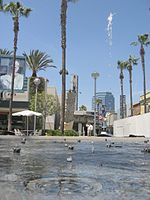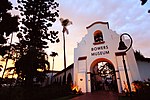Orange Crush interchange

The Orange Crush interchange, frequently called The Crush, is a freeway interchange in the city of Orange, California, near the borders of the cities of Orange, Santa Ana, Anaheim, and Garden Grove. The Disneyland Resort, The Outlets at Orange, St. Joseph Hospital, Children's Hospital of Orange County, the UCI Medical Center, Westfield MainPlace, Angel Stadium of Anaheim, Honda Center, Platinum Triangle and the Lamaroux Justice Center of the Superior Court of California of the County of Orange are all located at or near the interchange.This interchange of the Santa Ana (Interstate 5), Garden Grove (State Route 22), and Orange (State Route 57) freeways was listed in the 2002 Guinness World Records book as the most complex road interchange in the world. The name of the interchange, credited to KNX Radio traffic and weather reporter Bill Keene, is a play on the name of the Orange Crush soda.
Excerpt from the Wikipedia article Orange Crush interchange (License: CC BY-SA 3.0, Authors, Images).Orange Crush interchange
La Veta Avenue, Santa Ana Northwest
Geographical coordinates (GPS) Address Nearby Places Show on map
Geographical coordinates (GPS)
| Latitude | Longitude |
|---|---|
| N 33.7801 ° | E -117.8792 ° |
Address
La Veta Avenue
La Veta Avenue
92868 Santa Ana, Northwest
California, United States
Open on Google Maps






